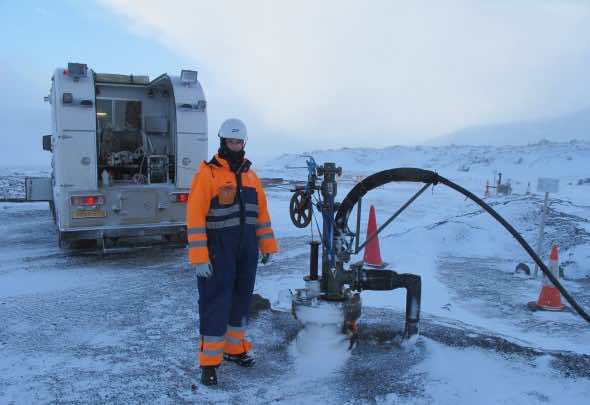The alarming increase in the global temperature has everyone talking about the climate change and global warming. One of the main culprits of the increase in the global temperature is the carbon dioxide gas. Annually, we exhale nearly 40 billion tons of the carbon dioxide gas into the atmosphere.
As the world looks for the ways to curtail the carbon dioxide emissions and search for the means to treat the gas, an Iceland power plant has found the perfect solution to the problem: bury it!
The Reykjavík Energy launched the CarbFix project in 2012 in hopes to find a way to reduce the atmospheric carbon emissions. They have developed a method for the underground ejection of the carbon dioxide such that it is turned into solid rock and cannot escape into the air.
The team working on this project has now published their findings in the journal Science. The researchers have reported an astonishingly fast mineralizing mechanism for the gas. The results of the study indicate that the technology has bright prospects and can also be utilized on a larger scale.
The unique volcanic geographical makeup of the Iceland implies that there is an abundance of the basalt in the region. Thus, the mixture of carbon dioxide and water is released deep underground whereby it reacts with the elements like calcium, magnesium, and iron present in the basalt. As a result of this interaction, carbon dioxide is transformed into carbonate mineral such as the limestone.
Hellisheidi geothermal power plant is the world’s largest power plant of its kind and uses the volcanically heated water to run the power turbines. The carbon dioxide gas generated by the plant is fed to the CarbFix. The findings reveal that nearly 95 percent of the injected carbon dioxide gas was mineralized in less than two years. Edda Aradóttir, CarbFix’s project manager, is ecstatic about the results:
“No one actually expected it to be this quick.”
Currently, the CarbFix project is housing almost 5000 tons of mineralized carbon dioxide annually. The facility is now being upgraded which is expected to enhance the storage capacity two folds.
According to Aradóttir, it costs $30 per ton for the CarbFix project to capture and inject the carbon dioxide. On the other hand, the conventional methods require between 65 and $100 per ton. The cost reduction has been attributed to the ingenious mineralizing technique that forgoes the need for carbon dioxide purification. The gas is just mixed with water and is injected deep inside the Earth.
On the other hand, the CarbFix project has also come under criticism for the high usage of water. It takes nearly 25 tons of water per each ton of carbon dioxide. However, Aradóttir has reassured that since the method employs salt water, there is no real harm in it.
Given that the basaltic rocks form almost 10 percent of the continent and is spread all across the ocean floor, the technology has huge prospects.
Bradford Hager, a professor of earth sciences at MIT, commented that albeit being a great alternative to the supercritical fluids, the technology may not produce such fast results when used in other basalt rocks that may not be as weathered as the ones found in Iceland.
“I am encouraged that it can work, but it is an overstatement to say it could be used across the ocean floors.”
Effectively, the countries need to come up with better incentives to encourage the carbon capturing technologies because this problem spans the whole world, and it will take more than one country to solve it.

